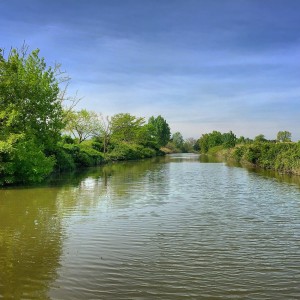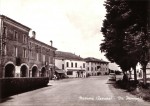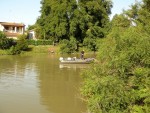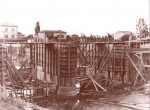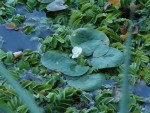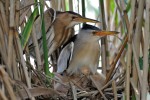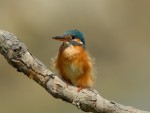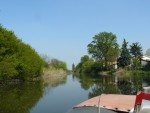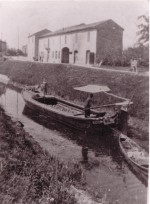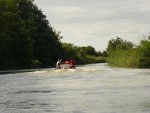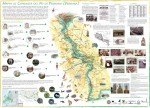The Po of Primaro
The Po of Primaro is a waterway fed by the Po of Volano. It crosses the municipality, terminating to the south after 28 km in the hamlet of Traghetto. It is rich in protected birdlife, other fauna and flora.
The history of the Po of Primaro until the 20th century
The river ran to the south east, flowing into the Adriatic immediately to the north of Ravenna. In the middle ages, the waterways were essential for transport, because with the fall of the Roman Empire, the roads were no longer well maintained.
The city of Ferrara developed as an important centre of commerce which, via the Primaro, connected the ports of the central Adriatic to the inland areas of the Po plain. In 1152, the course of the rivers changed substantially: the main flows of the Po moved further north, forming the “Po grande di Venezia” (large Po of Venice). Various human works and the earthquake of 1570 consolidated the new path. The flow of water in the Primaro dwindled, and numerous attempts to increase its flow by connecting it to various Apennine streams, rich in sediment, all failed.
Nevertheless, the Primaro remained navigable throughout the mediaeval and renaissance periods. In 1598, the Duchy of Ferrara returned to the Papal States, which decided to use the Primaro to solve the water problems caused by the Reno river, which came down from the Apennines and did not flow into the sea, rather ending in large swamps between Ferrara and Bologna. In 1767 the Reno was grafted to the middle section of the Primaro, cutting off Ferrara's direct access to the sea. The Po of Primaro was used until the mid 20th century for local transportation of agricultural products (hemp, beetroot) on “burchi”, flat-bottomed boats towed by large oxen walking along the banks.
The Primaro today
Today, the Ferrarese stretch of the Primaro terminates to the south against the banks of the Reno river at Traghetto, but it is not directly connected to the Reno. It is a basin around 28 km long and 20 m wide, whose waters are virtually still, fed by the Po of Volano and moved only by water being drawn off in summer for irrigation and the rainwater runoff from the surrounding land; its maximum depth is 4.5 m.
It is nevertheless essential for balancing the water cycle of the reclaimed plains, and although it crosses a heavily developed area, it is home to a rich level of wildlife, with 24 species of nesting birds and a further 32 migratory species, as well as insects, amphibians and reptiles protected by the thick aquatic vegetation.
The landscapes created by the river are extremely evocative, and slow navigation is possible in certain seasons. Its naturalistic importance was recognised in 2006 when it was included in the European ecological network Natura 2000. Two minor roads, mainly frequented by cycle tourists, run alongside the river. There are numerous “agriturismi”, or farm restaurants with accommodation, in the area.
The Po of Primaro represents the western boundary of the UNESCO site Ferrara, City of the Renaissance, and its Po Delta. A participative process led by the Ferrara Natural History Museum between 2012 and 2015 led to the creation of the Community Map of the Po of Primaro, a document created with the inhabitants of the riverside zones which summarises the cultural and natural riches of the area.
Bibliography
- Soranzo Giovanni, L’antico navigabile Po di Primaro nella vita economica e politica del delta padano. Pubblicazioni dell’Università cattolica del Sacro Cuore, Contributi. Serie Terza, Scienze Storiche, 5. 1964
- Bondesan Marco, L’area deltizia padana: caratteri geografici e geomorfologici, in Bondesan Marco, Il Parco del delta del Po: studi ed immagini, 1, Spazio Libri Ed, Ferrara 1990, pp. 9-48, 21 ff, 2 tabb.
- Masini Romano, Marrara tra cronaca e storia, Tipografia Sociale Saletti, Ferrara 1995
- Corazza Carla, Pantaleoni Anna, Sangiorgi Axel, Lefosse Sara, Indagini sull'ecosistema del Po di Primaro, con particolare riferimento agli invertebrati acquatici (Rete Natura 2000, ZPS IT4060017, Ferrara, Emilia-Romagna, Italia) in Quaderni di Studi e Notizie di Storia Naturale della Romagna, 31 2010, pp. 11-30
- Corazza Carla, Castellari Giuliana, La mappa di comunità del Po di Primaro. Un progetto per la crescita sostenibile di una Zona di Protezione Speciale in Storie Naturali, 7 2013, pp. 70-73 Vai al testo digitalizzato
Sitography
Fototeca
Compiling entity
- Museo Civico di Storia Naturale di Ferrara

